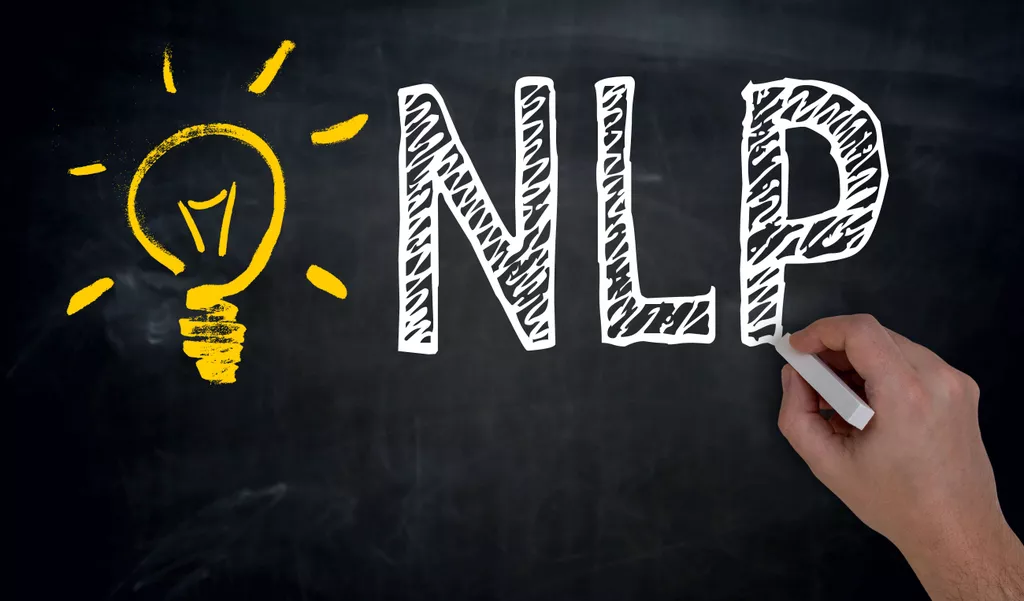For example, recommendations and pathways can be beneficial in your e-commerce strategy. If you sell products or services online, NLP has the power to match consumers’ intent with the products on your e-commerce website. This leads to big results for your business, such as increased revenue per visit (RPV), average order value (AOV), and conversions by providing relevant results to customers during their purchase journeys.
Some common tasks in NLG include text summarization, dialogue generation, and language translation. Natural Language Processing (NLP) is an interdisciplinary field focusing on the interaction between humans and computers using natural language. With the increasing amounts of text-based data being generated every day, NLP has become an essential tool in the field of data science.
Datasets in NLP and state-of-the-art models
Symbolic algorithms can support machine learning by helping it to train the model in such a way that it has to make less effort to learn the language on its own. Although machine learning supports symbolic ways, the ML model can create an initial rule set for the symbolic and spare the data scientist from building it manually. To launch your career in NLP, you’ll need a strong background in computer science, mathematics and linguistics. A post-secondary degree in one of these areas or related disciplines will provide you with the necessary knowledge and skills to become a NLP researcher, analyst, scientist or engineer. Our online Master of Science in Applied Artificial Intelligence program offers a flexible and comprehensive path to working in the field of natural language processing. At Bloomreach, we believe that the journey begins with improving product search to drive more revenue.
- Sensitivity and specificity for migraine was highest with 88% and 95%, respectively (Kwon et al., 2020).
- Syntactic analysis assesses how the natural language input aligns with the grammatical rules to derive meaning from them.
- Inspired by the BERT masking strategy, ERNIE was designed to enhance learning language representations through knowledge-masking strategies, including entity-level masking and phrase-level masking [28].
- Natural Language Processing (NLP) allows machines to break down and interpret human language.
- After that process is complete, the algorithms designate a statistical likelihood to every possible meaning of the elements, providing a sophisticated and effective solution for analyzing large data sets.
- With multiple hops, the model yielded results comparable to deep LSTM models.
Apart from the advanced features, the vector space modeling capability is state-of-the-art. Based on the findings of the systematic review and elements from the TRIPOD, STROBE, RECORD, and STARD statements, we formed a list of recommendations. The recommendations focus on the development and evaluation of NLP algorithms for mapping clinical text fragments onto ontology concepts and the reporting of evaluation results. One of the main activities of clinicians, besides providing direct patient care, is documenting care in the electronic health record (EHR). These free-text descriptions are, amongst other purposes, of interest for clinical research [3, 4], as they cover more information about patients than structured EHR data [5].
Natural language processing projects
Although AI-assisted auto-labeling and pre-labeling can increase speed and efficiency, it’s best when paired with humans in the loop to handle edge cases, exceptions, and quality control. The NLP-powered IBM Watson analyzes stock markets by crawling through extensive amounts of news, economic, and social media data to uncover insights and sentiment and to predict and suggest based upon those insights. Natural language processing models tackle these nuances, transforming recorded voice and written text into data a machine can make sense of. At this stage, however, these three levels representations remain coarsely defined.
They showed that pre-training the sentence encoder on a large unsupervised corpus yielded better accuracy than only pre-training word embeddings. Also, predicting the next token turned out to be a worse auxiliary objective than reconstructing the sentence itself, as the LSTM hidden state was only responsible for a rather short-term objective. Arguably, however, language exhibits a natural recursive structure, where words and sub-phrases combine into phrases in a hierarchical manner. Thus, tree-structured models have been used to better make use of such syntactic interpretations of sentence structure (Socher et al., 2013). Specifically, in a recursive neural network, the representation of each non-terminal node in a parsing tree is determined by the representations of all its children. Visual QA is another task that requires language generation based on both textual and visual clues.
7. Model Evaluation
With a vast amount of unstructured data being generated on a daily basis, it is increasingly difficult for organizations to process and analyze this information effectively. If a customer has a good experience with your brand, they will likely reconnect with your company at some point in time. Of course, this is a lengthy process with many different touchpoints and would require a significant amount of manual labor. Any good, profitable company should continue to learn about customer needs, attitudes, preferences, and pain points. Unfortunately, the volume of this unstructured data increases every second, as more product and customer information is collected from product reviews, inventory, searches, and other sources. Consumers can describe products in an almost infinite number of ways, but e-commerce companies aren’t always equipped to interpret human language through their search bars.
The Intersection of Genomics and Artificial Intelligence: A New Era of … – CityLife
The Intersection of Genomics and Artificial Intelligence: A New Era of ….
Posted: Fri, 09 Jun 2023 03:58:21 GMT [source]
For example, a high F-score in an evaluation study does not directly mean that the algorithm performs well. There is also a possibility that out of 100 included cases in the study, there was only one true positive case, and 99 true negative cases, indicating that the author should have used a different dataset. Results should be clearly presented to the user, preferably in a table, as results only described in the text do not provide a proper overview of the evaluation outcomes (Table 11). This also helps the reader interpret results, as opposed to having to scan a free text paragraph. Most publications did not perform an error analysis, while this will help to understand the limitations of the algorithm and implies topics for future research. Two reviewers examined publications indexed by Scopus, IEEE, MEDLINE, EMBASE, the ACM Digital Library, and the ACL Anthology.
NLTK — a base for any NLP project
It’s always best to fit a simple model first before you move to a complex one. The words that generally occur in documents like stop words- “the”, “is”, “will” are going to have a high term frequency. Removing stop words from lemmatized documents would be a couple of lines of code. Let’s understand the difference between stemming and lemmatization with an example.

Sentiment Analysis is also known as emotion AI or opinion mining is one of the most important NLP techniques for text classification. The goal is to classify text like- tweet, news article, movie review or any text on the web into one of these 3 categories- Positive/ Negative/Neutral. Sentiment Analysis is most commonly used to mitigate hate speech from social media platforms and identify distressed customers from negative reviews. However, the Lemmatizer is successful in getting the root words for even words like mice and ran. Stemming is totally rule-based considering the fact- that we have suffixes in the English language for tenses like – “ed”, “ing”- like “asked”, and “asking”. This approach is not appropriate because English is an ambiguous language and therefore Lemmatizer would work better than a stemmer.
Introduction to Natural Language Processing (NLP)
One illustration of this is keyword extraction, which takes the text’s most important terms and can be helpful for SEO. As it is not entirely automated, natural language processing takes some programming. However, several straightforward keyword extraction applications can automate most of the procedure; the user only needs to select the program’s parameters. A tool may, metadialog.com for instance, highlight the text’s most frequently occurring words. Another illustration is called entity recognition, which pulls the names of people, locations, and other entities from the text. The principle behind LLMs is to pre-train a language model on large amounts of text data, such as Wikipedia, and then fine-tune the model on a smaller, task-specific dataset.
- Learn more about how analytics is improving the quality of life for those living with pulmonary disease.
- Instead of having to go through the document, the keyword extraction technique can be used to concise the text and extract relevant keywords.
- There is use of hidden Markov models (HMMs) to extract the relevant fields of research papers.
- Natural language processing (NLP) is a field of computer science, artificial intelligence, and linguistics concerned with the interactions between computers and human (natural) languages.
- Word embeddings are able to capture syntactic and semantic information, yet for tasks such as POS-tagging and NER, intra-word morphological and shape information can also be very useful.
- NLP labels might be identifiers marking proper nouns, verbs, or other parts of speech.
We need a broad array of approaches because the text- and voice-based data varies widely, as do the practical applications. Natural language processing (NLP) has recently gained much attention for representing and analyzing human language computationally. It has spread its applications in various fields such as machine translation, email spam detection, information extraction, summarization, medical, and question answering etc. In this paper, we first distinguish four phases by discussing different levels of NLP and components of Natural Language Generation followed by presenting the history and evolution of NLP. We then discuss in detail the state of the art presenting the various applications of NLP, current trends, and challenges.
H. Dialogue Systems
This phase scans the source code as a stream of characters and converts it into meaningful lexemes. For example, celebrates, celebrated and celebrating, all these words are originated with a single root word “celebrate.” The big problem with stemming is that sometimes it produces the root word which may not have any meaning. NLU mainly used in Business applications to understand the customer’s problem in both spoken and written language. LUNAR is the classic example of a Natural Language database interface system that is used ATNs and Woods’ Procedural Semantics.
What are the 5 steps in NLP?
- Lexical Analysis.
- Syntactic Analysis.
- Semantic Analysis.
- Discourse Analysis.
- Pragmatic Analysis.
- Talk To Our Experts!
Natural language processing (NLP) is a field of artificial intelligence focused on the interpretation and understanding of human-generated natural language. It uses machine learning methods to analyze, interpret, and generate words and phrases to understand user intent or sentiment. The ability of a human to listen, speak, and communicate with others has undoubtedly been the greatest blessing to humankind. The ability to communicate with each other has unraveled endless opportunities for the civilization and advancement of humanity.
Wrapping Up on Natural Language Processing
But in first model a document is generated by first choosing a subset of vocabulary and then using the selected words any number of times, at least once irrespective of order. It takes the information of which words are used in a document irrespective of number of words and order. In second model, a document is generated by choosing a set of word occurrences and arranging them in any order. This model is called multi-nomial model, in addition to the Multi-variate Bernoulli model, it also captures information on how many times a word is used in a document. Most text categorization approaches to anti-spam Email filtering have used multi variate Bernoulli model (Androutsopoulos et al., 2000) [5] [15]. Using algorithms and models that can train massive amounts of data to analyze and understand human language is a crucial component of machine learning in natural language processing (NLP).
Overall, this study shows that modern language algorithms partially converge towards brain-like solutions, and thus delineates a promising path to unravel the foundations of natural language processing. The Machine and Deep Learning communities have been actively pursuing Natural Language Processing (NLP) through various techniques. Some of the techniques used today have only existed for a few years but are already changing how we interact with machines. Natural language processing (NLP) is a field of research that provides us with practical ways of building systems that understand human language. These include speech recognition systems, machine translation software, and chatbots, amongst many others. This article will compare four standard methods for training machine-learning models to process human language data.
Does NLP require coding?
Natural language processing or NLP sits at the intersection of artificial intelligence and data science. It is all about programming machines and software to understand human language. While there are several programming languages that can be used for NLP, Python often emerges as a favorite.
This is seen in language models like GPT3, which can evaluate an unstructured text and produce credible articles based on the reader. These NLP applications can be illustrated with examples using Kili Technology, a data annotation platform that allows users to label data for machine learning models. For example, to train a chatbot, users can annotate customer messages and responses using Kili, providing the data necessary to train the model to understand natural language and respond to customer queries.
- You can mold your software to search for the keywords relevant to your needs – try it out with our sample keyword extractor.
- Here the speaker just initiates the process doesn’t take part in the language generation.
- Natural language processing (NLP) is a field of artificial intelligence in which computers analyze, understand, and derive meaning from human language in a smart and useful way.
- This process involves semantic analysis, speech tagging, syntactic analysis, machine translation, and more.
- AI has disrupted language generation, but human communication remains essential when you want to ensure that your content is translated professionally, is understood and culturally relevant to the audiences you’re targeting.
- This understanding can help machines interact with humans more effectively by recognizing patterns in their speech or writing.
Can CNN be used for natural language processing?
CNNs can be used for different classification tasks in NLP. A convolution is a window that slides over a larger input data with an emphasis on a subset of the input matrix. Getting your data in the right dimensions is extremely important for any learning algorithm.




